Intervju med pave (emeritus) Benedikt
Det har nylig blitt offentliggjort et intervju med pave (emeritus) Benedikt XVI, som tar opp temaer som «mercy and our need for forgiveness, salvation through the cross, the necessity of baptism, and the importance of sharing in Christ’s redeeming love.» Intervjuet ble gjort i oktober i fjor, før en konferanse om rettferdiggjørelse og tro i Roma (i Jesuittenes kirke Il Jesu) – der teksten ble lest opp av erkebiskop Georg Gänswein.
Forandringer i synet på rettferdiggjørelse blir tatt opp tidlig i intervjuet, er der leser vi bl.a.:
For the man of today, compared to those of the time of Luther and to those holding the classical perspective of the Christian faith, things are in a certain sense inverted, or rather, is no longer man who believes he needs justification before God, but rather he is of the opinion that God is obliged to justify himself because of all the horrible things in the world and in the face of the misery of being human, all of which ultimately depend on Him. In this regard, I find it significant that a Catholic theologian may profess even in a direct and formal this inverted position: that Christ did not suffer for the sins of men, but rather, as it were, had «canceled the guilt of God.» Even if most Christians today would not share such a drastic reversal of our faith, we could say that all of this reveals an underlying trend of our times. When Johann Baptist Metz argues that theology today must be “sensitive to theodicy”, this highlights the same problem in a positive way. Even rescinding from such a radical contestation of the Church’s vision of the relationship between God and man, the man of today has in a very general way the sense that God cannot let most of humanity be damned. In this sense, the concern for the personal salvation of souls typical of past times has for the most part disappeared. …
Også vanskelige spørsmål om frelse og misjon tas opp i intervjuet:
… There is no doubt that on this point we are faced with a profound evolution of dogma. While the fathers and theologians of the Middle Ages could still be of the opinion that, essentially, the whole human race had become Catholic and that paganism existed now only on the margins, the discovery of the New World at the beginning of the modern era radically changed perspectives. In the second half of the last century it has been fully affirmed the understanding that God cannot let go to perdition all the unbaptized and that even a purely natural happiness for them does not represent a real answer to the question of human existence. If it is true that the great missionaries of the 16th century were still convinced that those who are not baptized are forever lost – and this explains their missionary commitment – in the Catholic Church after the Second Vatican Council that conviction was finally abandoned.
From this came a deep double crisis. On the one hand this seems to remove any motivation for a future missionary commitment. Why should one try to convince the people to accept the Christian faith when they can be saved even without it? But also for Christians an issue emerged: the obligatory nature of the faith and its way of life began to seem uncertain and problematic. If there are those who can save themselves in other ways, it is not clear, in the final analysis, why the Christian himself is bound by the requirements of the Christian faith and its morals. If faith and salvation are no longer interdependent, faith itself becomes unmotivated.
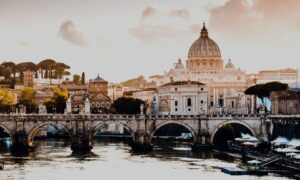
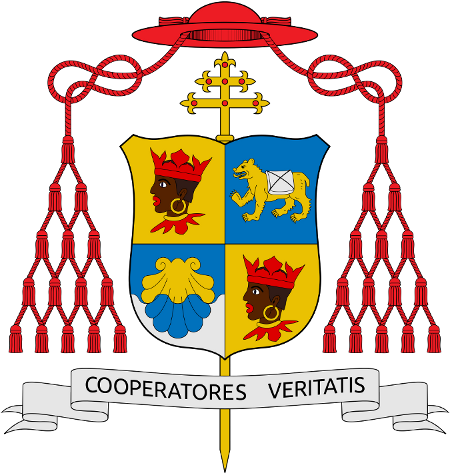 En presteblogger i England,
En presteblogger i England, 
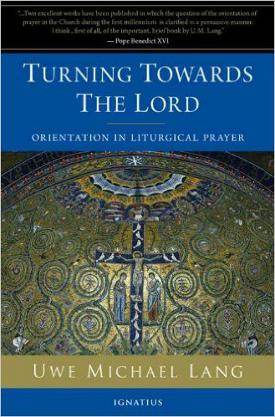 Den første av disse bøkene er Turning Towards The Lord av Fr. Uwe Michael Lang, og
Den første av disse bøkene er Turning Towards The Lord av Fr. Uwe Michael Lang, og 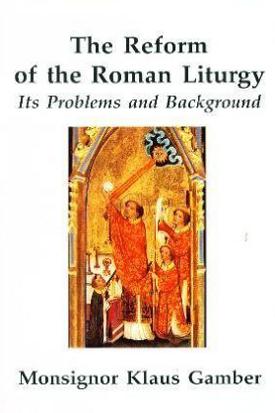 However, it would be wrong to align Gamber with traditionalists who draw a line at 1962, 1955, or even earlier, beyond which all change is anathema. Gamber is a critical liturgical historian, as shown by his precise and detailed discussion of the question of which way the liturgy should be celebrated, which comprises the second book in this volume.
However, it would be wrong to align Gamber with traditionalists who draw a line at 1962, 1955, or even earlier, beyond which all change is anathema. Gamber is a critical liturgical historian, as shown by his precise and detailed discussion of the question of which way the liturgy should be celebrated, which comprises the second book in this volume. 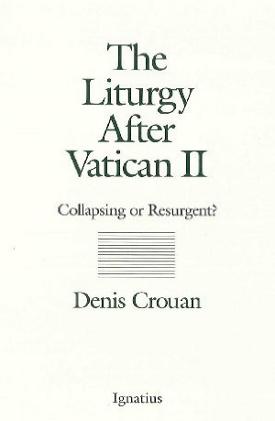 Den tredje og siste av disse kritiske bøkene er The Liturgy After Vatican II: Collapsing or Resurgent? av Denis Crouan.
Den tredje og siste av disse kritiske bøkene er The Liturgy After Vatican II: Collapsing or Resurgent? av Denis Crouan. 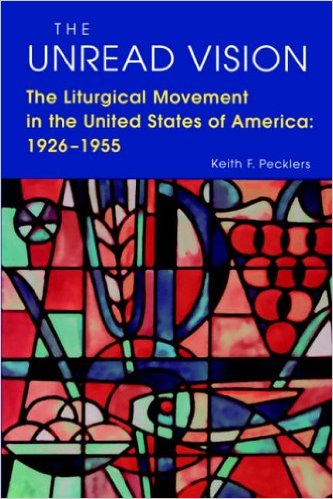 Etter å ha lest mange bøker de siste fem månedene som presenterer Kirkens liturgi de siste mange hundre (og opp til to tusen) år, leser jeg nå den siste uka av studiepermisjonen litt nyere stoff. Bl.a. denne boka som jeg allerede har lest en gang før (for 7-8 år siden): The Unread Vision: The Liturgical Movement in the United States of America: 1926-1955 av Keith F. Pecklers, SJ.
Etter å ha lest mange bøker de siste fem månedene som presenterer Kirkens liturgi de siste mange hundre (og opp til to tusen) år, leser jeg nå den siste uka av studiepermisjonen litt nyere stoff. Bl.a. denne boka som jeg allerede har lest en gang før (for 7-8 år siden): The Unread Vision: The Liturgical Movement in the United States of America: 1926-1955 av Keith F. Pecklers, SJ.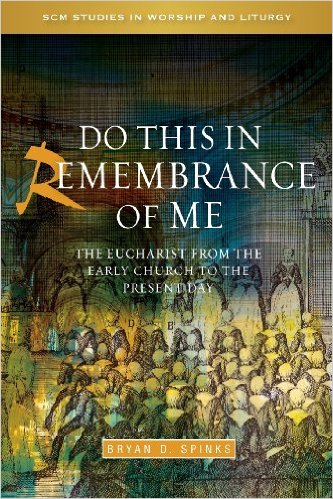 Do this in Remembrance of Me: The Eucharist from the Early Church to the Present Day av Bryan D. Spinks er den siste oversiktsboka over messens utvikling jeg har med meg, og jeg har lest den ferdig i dag. (De siste bøkene jeg har med meg på dette studieoppholdet handler mer om liturgisk utvikling de siste 100 år – og jeg kommer tilbake til dem.)
Do this in Remembrance of Me: The Eucharist from the Early Church to the Present Day av Bryan D. Spinks er den siste oversiktsboka over messens utvikling jeg har med meg, og jeg har lest den ferdig i dag. (De siste bøkene jeg har med meg på dette studieoppholdet handler mer om liturgisk utvikling de siste 100 år – og jeg kommer tilbake til dem.)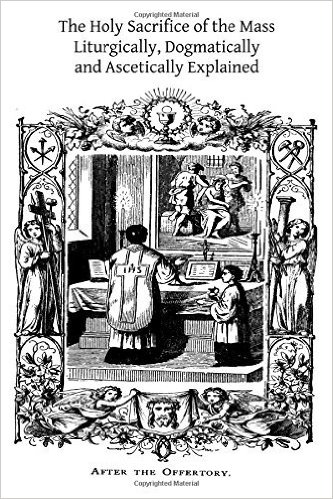 Den nest siste store oversiktboka over messens liturgi jeg har sett på er The Holy Sacrifice of the Mass: Liturgically, Dogmatically and Ascetically Explained av Fr Nicholas Gihr. Den ble utgitt i 1902, men er ny utgitt i nylig, min utgave (fotostatkopi) er fra 2013.
Den nest siste store oversiktboka over messens liturgi jeg har sett på er The Holy Sacrifice of the Mass: Liturgically, Dogmatically and Ascetically Explained av Fr Nicholas Gihr. Den ble utgitt i 1902, men er ny utgitt i nylig, min utgave (fotostatkopi) er fra 2013.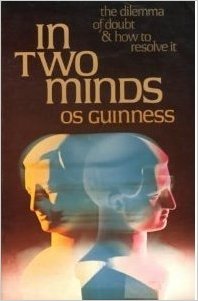
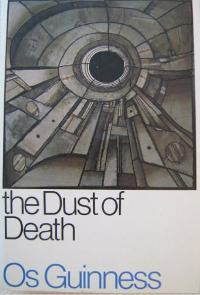 Boka The Dust of Death leste jeg på slutten av 70-tallet, og den gir en god oversikt over alle religionene og -ismene som hadde kommet til vesten på 60-tallet.
Boka The Dust of Death leste jeg på slutten av 70-tallet, og den gir en god oversikt over alle religionene og -ismene som hadde kommet til vesten på 60-tallet. 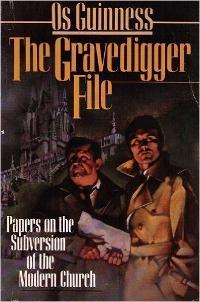 Boka The Gravedigger File var kanskje ikke så viktig for meg, men den peker på en del problemer som den moderne kristenheten har.
Boka The Gravedigger File var kanskje ikke så viktig for meg, men den peker på en del problemer som den moderne kristenheten har. 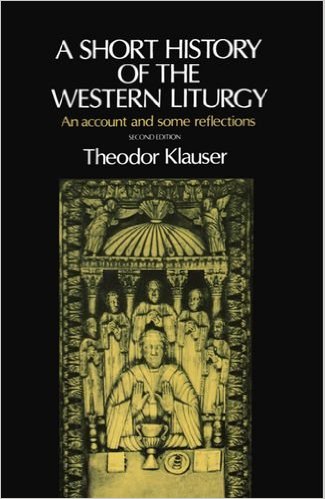 Jeg leser i dag ferdig Theodor Klauser: A Short History of the Western Liturgy. Det er ei nokså kort bok (litt over 200 s) og en del av stoffet er godt kjent for meg, men han skriver bl.a. en del interessante ting om hvordan Tridentinerkonsilets liturgireformer ble gjennomført. På
Jeg leser i dag ferdig Theodor Klauser: A Short History of the Western Liturgy. Det er ei nokså kort bok (litt over 200 s) og en del av stoffet er godt kjent for meg, men han skriver bl.a. en del interessante ting om hvordan Tridentinerkonsilets liturgireformer ble gjennomført. På 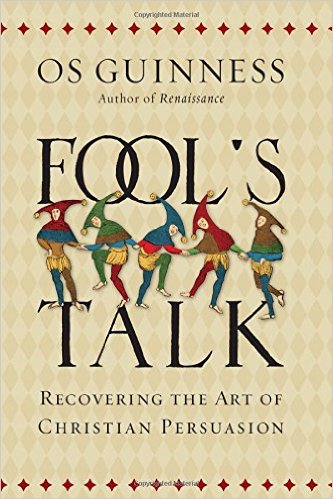 Os Guinness er en av personene knyttet til Francis Schaffer (som
Os Guinness er en av personene knyttet til Francis Schaffer (som 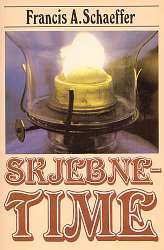 Jeg ble for noen få dager siden kontaktet ang en mulig nyutgivelse av Francis Schaeffers bok Skjebnetime, som jeg oversatte til norsk i 1985. Francis Schaeffer og hans arbeid på L’Abri betydde mye for meg i mange år, og da jeg ble kontaktet om boka, dukket mange gamle minner opp (jeg møtte bl.a. min kone på L’Abri i Sveits i 1985). Tidligere i dag leste jeg bl.a. om en debatt om Francis Schaeffer i Norge i 2011 –
Jeg ble for noen få dager siden kontaktet ang en mulig nyutgivelse av Francis Schaeffers bok Skjebnetime, som jeg oversatte til norsk i 1985. Francis Schaeffer og hans arbeid på L’Abri betydde mye for meg i mange år, og da jeg ble kontaktet om boka, dukket mange gamle minner opp (jeg møtte bl.a. min kone på L’Abri i Sveits i 1985). Tidligere i dag leste jeg bl.a. om en debatt om Francis Schaeffer i Norge i 2011 –  Jeg har nå lest ferdig den ganske berømte The Shape of the Liturgy, av Dom Gregory Dix, og er faktisk ikke så veldig fornøyd med boka.
Jeg har nå lest ferdig den ganske berømte The Shape of the Liturgy, av Dom Gregory Dix, og er faktisk ikke så veldig fornøyd med boka.